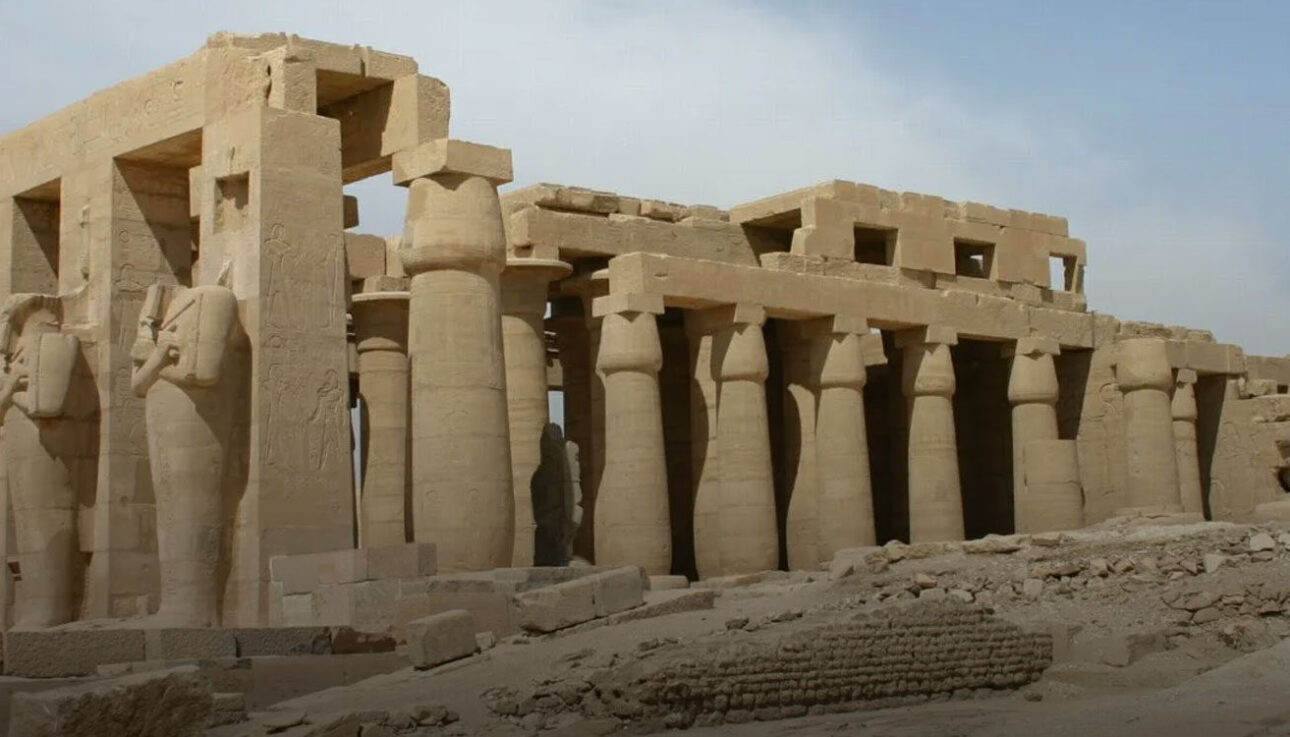History of the Ramesseum Temple
The temple known as Ramesseum is the center of a huge architectural complex. The temple was built by Ramsess II (third king of the 19th dynasty 1292–1190 BC.) and was used for funerary rituals, but, like all Theban funeral temples, it was dedicated to the God Amon.
In accordance with New Kingdom Royal burial practices, the Ramesseum was the memorial temple of Ramsess II, – a place of worship dedicated to pharaoh, god on earth, where his memory would have been kept alive after his passing from this world. Surviving records indicate that work on the project began shortly after the start of his reign and continued for 20 years.
Mysterious Colossus of the Entrance
At the entrance to the inner courtyard of the Ramesseum stood a colossus, which, according to the description, Diodorus Siculus (who saw it with his own eyes) was the largest statue in the world. The statue was carved from a solid block of pink granite of enormous size, apparently imported from Aswan. In the time of Diodorus, the statue was still intact; now it lies on the ground in the form of broken fragments. It is difficult to understand from the broken fragments how high this statue reached when it was intact. But according to the estimated calculations of archaeologists, its weight was about 1000 tons, and the weight of the pedestal on which the statue “sat” – 750 tons!
Neither the size of the statue nor the quality of its workmanship, which is still noticeable on the carefully polished surface, does not correspond to the manual manufacture of the times of the New Kingdom. The quality of execution of hieroglyphs and cartouches in the colossus granite leaves no doubt that it was made with the help of machinery. The head of the statue, which stands not far from the colossus, was also made of granite.
It is striking that all other elements of the Ramesseum complex (walls, colonnades, statues) are of poor quality, even smaller statues made of limestone are not made of monolithic, but of individual bricks. Conclusion: the colossus and the temple were built in different historical periods.
Perhaps the statue was built during the reign of the ancient gods of Egypt, and Ramesses II built his temple complex around the colossus, which is evidence of an ancient civilization (before the time of the pharaohs).
A curious detail: on the head of the statue in the Ramesseum has alternating strips of polished and unpolished granite. Perhaps the sculptor wanted to depict hair in this way, or some characteristic detail of the headdress. However, exactly the same element is found on the head of the Sphinx on the Giza plateau. And if there is evidence of a very ancient age of the Sphinx, then the presence of a series of stripes on the head of the statue in the Ramesseum indicates that it was created during the civilization of the ancient gods of Egypt.
Surroundings of the Ramesseum Temple
Adjacent to the north of the hypostyle hall was a smaller temple; this was dedicated to Ramses’s mother, Tuya, and his beloved chief wife, Nefertari.
To the south of the first courtyard stood the temple palace. The entire complex was surrounded by various storerooms, granaries, workshops, and other ancillary buildings, some built as late as Roman times.
A cache of papyri and Ostraca dating back to the third intermediate period (11th to 8th centuries BC) indicates that the temple was also the site of an important scribal school. And neither was this a virgin plot when Ramses had the first stone put in place: beneath the hypostyle hall, modern archaeologists have found a shaft tomb from the Middle Kingdom, yielding a rich hoard of religious and funerary artifacts.


